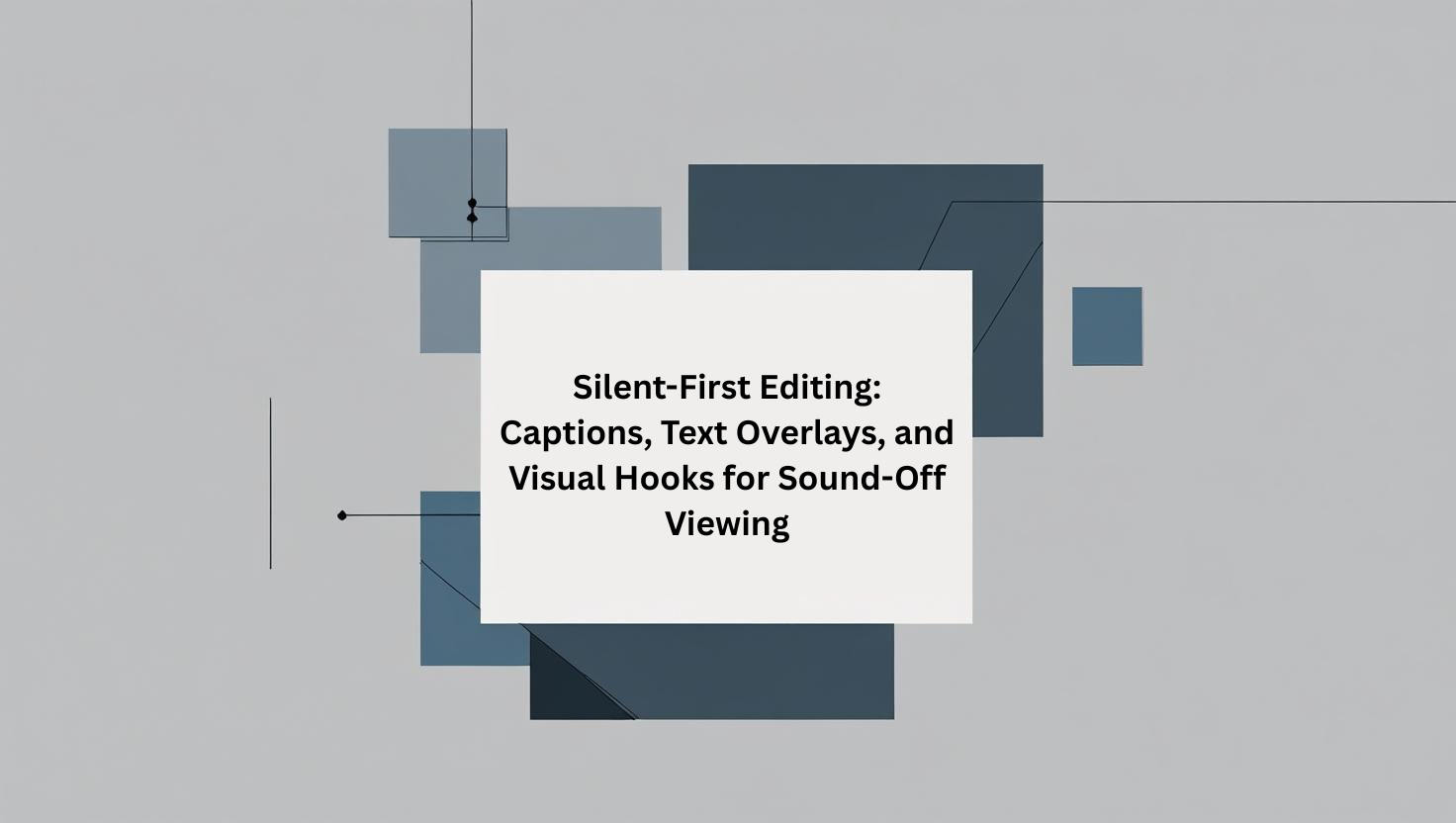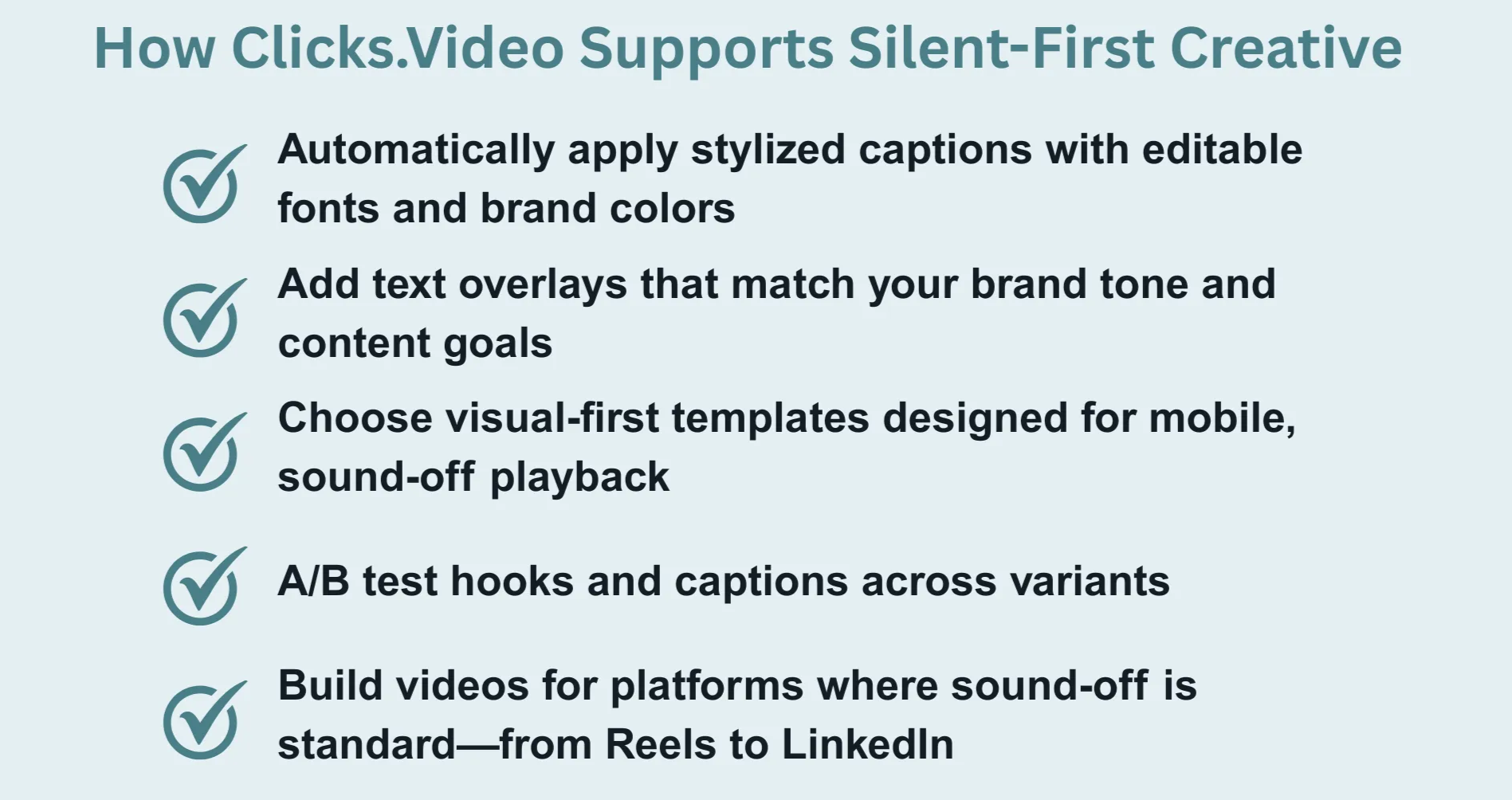
Let’s be real: if your video needs sound to make sense, you’re losing viewers.
In 2025, we’re watching more video than ever—on the train, in the office, in bed next to a sleeping partner. And most of the time? The sound is off. That means your video has about three seconds to hook someone, and it has to make sense without audio.
Silent-first editing isn’t a bonus feature. It’s a baseline strategy. Whether you're making UGC-style ads, educational reels, or paid social videos, silent-first design increases reach, retention, and engagement.
Sound-off viewing has been growing for years, but now it’s become the default—especially on platforms like Instagram, TikTok, LinkedIn, and Facebook. Even YouTube Shorts and Twitter/X are seeing an uptick in muted playback.
Why does this matter? Because up to 85% of video views on social platforms happen without sound. And if your message is entirely in the voiceover, there’s a high chance your viewer is scrolling past before you’ve made your point.
Creators and marketers have to assume their video is being watched in silence—and build accordingly.
Captions aren’t just an accessibility feature—they’re an engagement tool. Done well, they guide the viewer’s eye, reinforce your message, and give context to everything happening on screen.
But not all captions are created equal. Static, low-contrast subtitles at the bottom of the screen won’t cut it anymore. What works now is dynamic captions that feel designed, not default.
Think large, branded fonts. Color blocking. Kinetic movement. Strategic timing that matches your edits.
Captions should:
Many creators now treat captions as the main character—using them as punchlines, transitions, or even the primary narrative layer when voiceovers are too quiet to follow.
While captions transcribe spoken content, text overlays guide the viewer through your story—even if no one’s talking.
These are your visual headlines. Your scroll-stopping punchlines. Your “Here’s what’s happening” moments.
Effective text overlays:
When paired with good editing rhythm and visuals, overlays make your message unmissable. They’re especially powerful in ad creative where your call to action or product value needs to land fast.
Sound-off doesn’t mean emotionless. In fact, when sound isn’t there to do the heavy lifting, your visuals have to carry more of the emotional and narrative weight.
Enter visual hooks—those first few frames that grab attention, spark curiosity, and get someone to stay.
Visual hooks might include:
The goal is to visually communicate “this is worth watching” within seconds—without relying on music, narration, or sound design. This is where UGC-style editing often shines: it feels native, personal, and real. But even polished branded content can pull this off with the right pacing and intention.
Want to make your content more watchable—even with the sound off? Here are a few silent-first editing tips to keep in mind:
Start with the assumption that no one will hear your video. Build your story visually—then enhance it with sound, not the other way around.
Use captions creatively. Make them part of your design system, not just an afterthought.
Build in visual pacing. Motion, text, and editing rhythm should create a sense of movement—even when muted.
Add structure through on-screen text. Break content into sections or steps so viewers can follow easily.
Test your video in silence before publishing. If you can’t understand what’s happening without audio, revise until it’s crystal clear.

Clicks.Video makes it easy to create sound-off-optimized content that still feels rich, engaging, and strategic.
When you generate videos through the platform, you can:
It’s built for creators and marketers who want fast, flexible, and sound-conscious video workflows—no editing software required.

Why is silent-first editing important for video ads?
Because most viewers watch social video content without sound, videos that rely on narration or music often fail to land. Silent-first editing ensures your message is seen and understood no matter the volume setting.
What’s the difference between captions and text overlays?
Captions transcribe spoken words, while text overlays are used for storytelling, structure, and calls to action. Both are essential for sound-off viewing.
How do I make my captions more engaging?
Use larger fonts, branded colors, and kinetic motion. Don’t just transcribe—design your captions to emphasize key phrases and follow the video’s pacing.
Can Clicks.Video help with silent-first videos?
Yes. Clicks.Video offers captioning, branded overlays, and sound-off-friendly video templates that help creators and marketers produce optimized videos quickly.
Is silent-first editing just for social media?
Not at all. While it’s most critical for social platforms, silent-first techniques also improve accessibility and engagement in product videos, onboarding, and internal communications.